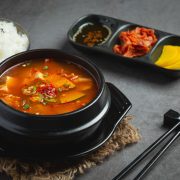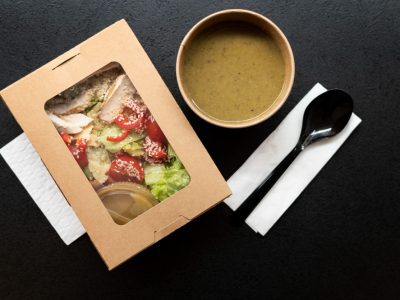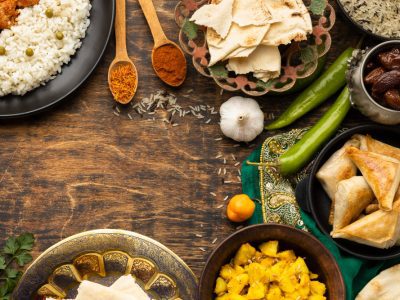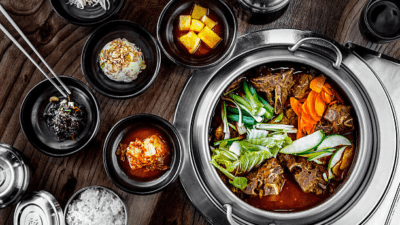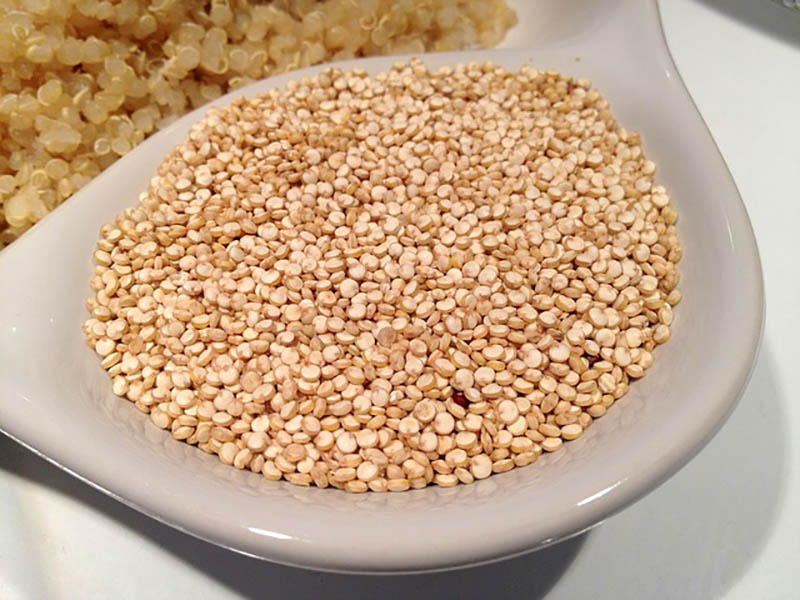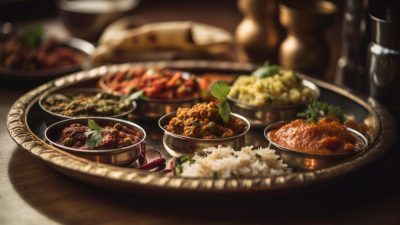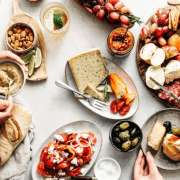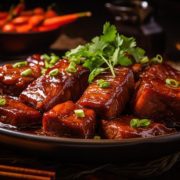Introduction to Kebabs and Their History in India
Kebabs, with their mouth-watering aroma and flavour, have always been an essential part of cuisines all over the world. The Arabic word “kabāb,” meaning roasted meat, is the origin of the phrase “kebab,” which has its roots in the Middle East. Kebabs have their roots in an ancient cooking technique that involved skewering meat and cooking it over open flames. Local spices, ingredients, and cooking methods were incorporated into these culinary practices as they travelled across other regions.
There is a rich tapestry of invasions, trade, and cultural exchanges that the kebab travels through in India. The Mughal rulers of the 16th century are commonly believed to have introduced kebabs to Indian food. The Persian ancestry of these kings and queens carried with them their royal cooks, who introduced several aromatic dishes and grilled meats to the Indian palate. The distinctive Indian kebab heritage evolved from these recipes as they were tweaked to suit regional preferences.
Modern Indian cuisine would not be the same without the many varieties of kebabs that emerged as a result of Mughal influence. As an example, the Galouti Kebab was made in Lucknow at the court of Nawab Asaf-ud-Daula. According to urban legend, the ageing Nawab, who had lost his teeth but not his appetite for meat, was the inspiration for this exquisite treat. Thanks to a combination of more than a hundred spices and finely chopped meat, the end product was a kebab that melted in your mouth.
Similarly, the Seekh Kebab—a regional staple—is made with ground meat that is shaped onto skewers and cooked until it is done. Their unique flavour was enhanced by the use of indigenous herbs and spices, which distinguished them from other Middle Eastern dishes.
As kebabs became more popular across India, regional variants reflecting local flavours and ingredients began to appear. A kebab filled with minced meat and yoghurt called a Shikampuri Kebab gained popularity in Hyderabad. As a symbol of Bengal’s rich aquatic resources, fish kebabs rose to fame in the region.
Kebabs in India nowadays can be made with a variety of meats. To accommodate a wide range of dietary restrictions, vegetarian alternatives have been created utilising paneer, lentils, and veggies. This change highlights how the kebab has become an integral part of Indian cuisine and how adaptable it is.
Health Benefits of Incorporating Kebabs into Your Diet
A well-planned kebab can be a healthy dietary complement. The most important advantages of health are:
- High Protein Content: Chicken, lamb, and beef are common ingredients in kebabs and are high in protein. Protein is a building block for stronger muscles and for keeping the body running smoothly.
- Grilling Reduces Fat: When opposed to other cooking methods, such as frying, grilling produces a dish with less fat since the surplus fat drips from the meat.
- Inclusion of Vegetables: Vegetables are a common component in kebabs, either cooked with the meat or served as a side dish. The nutritional value of the meal is improved because to the addition of fibre, vitamins, and minerals.
- Use of Spices: Spices used to season Indian kebabs are some of the best in the world. Not only do spices like coriander, turmeric, and cumin add flavour, but they also have antioxidant and anti-inflammatory effects.
- Portion Control: Serving kebabs on skewers makes it easier to control portion sizes, which in turn makes it easier to monitor calorie consumption.
However, it’s essential to be mindful of certain factors:
- Marinades and Sodium: There might be a lot of salt in some marinades. One way to reduce the risk of this is to make your own marinades at home and monitor the salt content.
- Charring Concerns: Charred food can release toxic chemicals, thus it is important to avoid over-grilling. It is recommended to grill meats until they are cooked to perfection, taking care not to burn them too much.
When eaten as part of a healthy diet with other nutritious foods like fresh vegetables and whole grains, kebabs are a tasty and nutritious addition to any meal.
Restaurants with the Best Kebabs in India
When eaten as part of a healthy diet with other nutritious foods like fresh vegetables and whole grains, kebabs are a tasty and nutritious addition to any meal:
- Karim’s, Delhi
Located in the lively alleys close to Jama Masjid, Karim’s has been a staple of the local cuisine since 1913. Haji Karimuddin opened the restaurant with the intention of making the delectable Mughal food available to the masses. Famous for their juicy texture and aromatic spice blend, these Seekh Kebabs are sure to turn heads. Kebab lovers must visit this restaurant for the ambiance, which is reminiscent of old-world elegance and enhances the dining experience.
- Tunday Kababi, Lucknow
Tunday Kababi’s delicacies are a must-try on every trip to Lucknow. Haji Murad Ali, also known as “Tunday” for his deft one-handed cooking skills, opened this restaurant in 1905 and became famous for its Galouti Kebabs. The delicate preparation of these kebabs, which includes finely minced beef and a mixture of spices, results in meat that practically melts in your mouth.
- Bademiya, Mumbai
Tasty kebabs have been served at Bademiya, a restaurant nestled in the alleys of Colaba, since 1946. A culinary icon now stands where Mohammad Yaseen once stood—a modest seekh kebab kiosk. Both residents and visitors rave about their Chicken Bhuna Roll and Mutton Seekh Kebabs. With the open air and the scent of grilling meats, you can have a once-in-a-lifetime meal.
4. Bukhara, New Delhi
Bukhara, housed in the ITC Maurya Hotel, has been a legendary spot for dining since it opened in 1977. Diners can see the mastery of kebab production in action in the restaurant’s famously rustic open kitchen. Creamy chicken kebabs called Murgh Malai Kebab and seasoned entire spring lamb legs called Sikandari Raan are two of the restaurant’s signature dishes. Bukhara has received praise from all over the world for its traditional tandoor cooking techniques and premium ingredients.
5. Peter Cat, Kolkata
Peter Cat, located in the middle of Kolkata, is a famous restaurant that serves a special combination of Indian and continental dishes. Succulent kebabs, buttered rice, and grilled veggies make up the Chelo Kebab platter, the restaurant’s signature dish. Its welcoming atmosphere and friendly service make it a popular choice for both residents and visitors.
6. Siddique Kebab Centre, Hyderabad
Siddique Kebab Centre is well-known as a fixture in Hyderabad’s culinary scene, beloved for its delectable kebabs. Particularly well-liked are the Chicken Seekh Kebab and the Mutton Boti Kebab, both of which showcase the succulent meat and flavourful spices that are hallmarks of Hyderabadi cuisine. Kebab lovers must visit this location for its relaxed atmosphere and inexpensive costs.
7. The Great Indian Kebab Factory, Bengaluru
Bengaluru is home to The Great Indian Kebab Factory, where you can get a modern spin on classic kebabs. Using both traditional recipes and cutting-edge methods, the restaurant offers a varied menu that caters to both vegetarians and those who want meat. It is well-liked among the city’s gourmets because of its trendy decor and creative presentation.
8. Sheesh Kebab, Bengaluru
Sheesh Kebab serves authentic Indo-Persian cuisine and is located in Frazer Town on St. Marks Road. Juicy lamb sheesh kebabs and chicken joojeh kebabs are just two of the many kebabs on the menu. These meats are marinated in a special blend of spices and cooked to juicy perfection. Kebab enthusiasts in Bengaluru must visit this restaurant for the elevated eating experience made possible by the warm welcome and exquisite atmosphere.
9. Abdul Malik Chicken Corner, Delhi
Famous for its classic kebabs, Abdul Malik Chicken Corner is located in the old district close to Jama Masjid. The Buff and Mutton Seekh Kebabs are exceptional, made using a spice blend that has been handed down from one generation to another. Making these kebabs on a sigri (traditional grill) brings out their unique smokey flavour, which is really mouthwatering.
10. Aap ki Khatir, Delhi
Aap ki Khatir is a little restaurant in the SDA Market that has won over many customers with its mouth-watering kebabs. The Kakori Kebabs stand out on the menu because to their delicate texture and mild flavours. This meal is so good that customers keep coming back for more, especially when paired with the varqi paratha.
11. Qureshi Kabab, Delhi
Qureshi Kabab, located close to Jama Masjid, is well-known for its delicious kebabs that are topped with spice and butter. Its distinctive flavour is the product of an inventive take on classic recipes, which distinguishes it from other local kebab places. For kebab lovers exploring Old Delhi, this place is a must-visit due to its scented surroundings and lively ambiance.
12. Al-Kausar, Delhi
Near Assam Bhavan in Chanakyapuri, you will find Al-Kausar, a restaurant famous for its delicious biryanis and kebabs. Galouti Kebabs are a must-try due to their rich flavour and delicate texture. People from all over come to this restaurant for its traditional Mughlai food because of its dedication to quality and authenticity.
Conclusion
Kebabs are an important part of Indian cuisine because of its many uses and long history in the country. Kebabs have developed through time, absorbing regional tastes and skills, from the Mughal court kitchens to the crowded streets of contemporary cities. Their cultural significance and delicious flavour have brought them modern-day acclaim.
Kebabs, when made with lean meats and cooked to perfection, may be a healthy addition to anyone’s diet. In addition to improving flavour, aromatic spices have antioxidant characteristics that benefit health in general.
You may take a culinary trip across India’s rich history and diverse cuisine by visiting one of the country’s many kebab joints. The diverse array of flavours that characterise Indian food is on display at every restaurant thanks to their inventive spins on this traditional dish.
The irresistible Galouti Kebabs of Lucknow, the fiery Seekh Kebabs of Delhi, and the creative fusion kebabs of Bengaluru are just a few examples of the many variations on this theme that can be found in Indian cuisine. Kebabs, which combine elements of both traditional and contemporary cuisine, will always be a fan favourite, no matter what happens to food trends.
A food enthusiast and a blogger – someone who likes to eat and write about it. I’m passionate about exploring different cuisines and challenging my palette. I give into my food craving regularly and am often on the hunt to find my new favorite food place in town.


